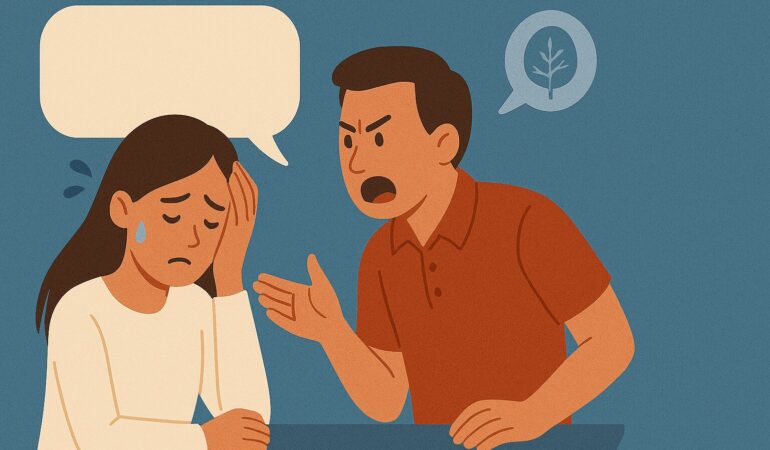4 Ways Anxiety Shows Up in Your Body
How Anxiety Feels in Your Body
Anxiety isn’t just racing thoughts or worry. It’s a full-body experience. Many people are surprised to learn that their unexplained physical complaints, like a constantly tight neck or that fluttery “butterflies” feeling in the stomach, are actually signs of anxiety or emotional distress. These sensations happen because your nervous system goes into “alert mode,” preparing you for danger even when there isn’t any. Below, we’ll explore the four most common physical ways anxiety manifests, with descriptions that might make you think, “That’s exactly what I’ve been feeling!”
Anxiety isn’t Just in Your Head
Emotions are not simply “feelings”. They’re better described as a voltage: the body’s way of creating heightened potential for a very specific set of behaviors. When you’re “feeling sad”, you might also say your body is primed to act in ways to illicit comfort and care from others. When you’re “feeling mad”, you might also say your body is priming itself to defend itself from danger. When you’re “feeling anxious”, your body is priming itself to get to safety. The “feeling” of anxiety isn’t simply a thought or a sensation, it’s a preparedness for very specific actions your body is readying itself to take.
So when we see anxiety as a “safety-seeking mode” in the body, it makes sense that it would come with all kinds of physiological changes, not just thoughts or feelings. The body shifts into a kind of bracing position that impacts
- your muscles
- your digestive system
- your cardiovascular system
- and your breathing
These 4 Somatic Symptoms Often Stem From Stress
Studies consistently show that anxiety triggers the sympathetic nervous system (your fight-or-flight response), leading to real physical changes. For instance, chronic anxiety keeps muscles tense, disrupts digestion via the gut-brain axis, elevates heart rate through adrenaline surges, and alters breathing patterns. Research from sources like Harvard Health and the Journal of Psychosomatic Research (2023-2025) highlights how these bodily symptoms affect millions, often mimicking other conditions but stemming from stress.
1. Tightness in the Neck, Shoulders, and Jaw
One of the most relatable signs is that persistent knot-like tension across your shoulders, a stiff neck that makes turning your head uncomfortable, or unconsciously clenching your jaw (sometimes leading to headaches or tooth pain). You might notice your shoulders “hunched up” by your ears without realizing it, or wake up with soreness as if you’ve been carrying heavy weights all night.
Anxiety causes muscles to brace for “threat,” and common hotspots like the neck and shoulders hold onto that stress. A 2024 Harvard Health report notes this chronic tension is a top complaint, often leading to tension headaches.
2. Racing or Pounding Heart with Chest Tightness
Suddenly feeling your heart thump hard in your chest, like it’s skipping beats or racing out of nowhere. Even when you’re just sitting still. It might come with a heavy, squeezed feeling in your chest that makes you worry something’s wrong with your heart.
Adrenaline floods your system during anxiety, speeding up your heartbeat to pump more blood to muscles. Frontiers in Psychiatry (2024) links this hyperarousal to common panic-like episodes, affecting up to 40% of anxiety sufferers.
3. Stomach Upset: Butterflies, Nausea, or Knots
That classic “butterflies in your stomach” flutter before stress, turning into a knotted, queasy feeling, nausea, bloating, or even cramps/diarrhea without eating anything bad. Your appetite might vanish, or you feel like food just sits heavily.
The gut-brain axis means stress diverts energy from digestion, causing these issues. Nature Reviews Gastroenterology & Hepatology (2022) connects anxiety to IBS-like symptoms in many people.
4. Shortness of Breath or Feeling Like You Can’t Get Enough Air
Breathing feels shallow and rapid, like you’re not getting a full breath, or you sigh/yawn a lot trying to “catch” it. This can lead to dizziness, lightheadedness, or tingling in your hands/feet from hyperventilation.
Anxiety shifts breathing to quick, chest-based patterns, disrupting oxygen balance. Psychophysiology studies (2025) show this in most anxiety disorders.
What These Somatic Symptoms Feel Like Day-to-Day
Neck/shoulders/jaw: Constant ache, like you’ve been staring at a screen all day (even if you haven’t), or grinding teeth at night.
Heart/chest: Sudden pounding that wakes you or hits during quiet moments, with tightness making deep breaths hard.
Stomach: Nervous flutter turning to nausea, or a “pit” that ruins meals.
Breathing: Feeling “air hungry,” sighing often, or dizzy spells that amplify worry.
These can create a loop: physical discomfort fuels more anxiety.
Four Somatic Tools to Soothe Your Body
Evidence-based ways to interrupt the cycle:
- Progressive Muscle Relaxation
Tense and release muscle groups (start with shoulders/jaw) to teach your body the difference between tension and calm. (American Psychological Association) - Diaphragmatic Breathing
Belly breathing (hand on stomach, inhale to expand it) slows heart rate and eases chest tightness/breathlessness. Try 4-7-8: Inhale 4, hold 7, exhale 8. - Grounding with Senses
5-4-3-2-1 technique pulls you from physical overwhelm into the present. - Gentle Movement
Neck rolls, shoulder shrugs, or walking to release stored tension and boost endorphins.
Awareness Is the Biggest Lever for Change
When these physiological symptoms of anxiety are treated as “just” muscle tension, or heart tension, or IBS, we give ourselves very little leverage to help ourselves. This is called somatization, and it’s when people misjudge an emotional experience as a physiological one, compounding their own anxiety. Here’s how the destructive cycle works:
- Tension in my chest from anxiety
- I think the tension is physiological
- I get worried I’m having a heart problem
- My anxiety increases
- My chest tension gets worse
- I get more worried I’m having a heart problem
- Etc.
Or with muscle tension:
- Muscle tension from anxiety
- I think the muscle tension is physiological
- I try unsuccessfully to loosen the tension
- I get more anxious about my muscle tension
- I avoid more activities that will cause muscle tension
- I still have muscle tension
- I get more anxious about my muscle tension
- Etc.
But here’s what healing looks like. When we grow to understand the emotional causes of our bodily tension, the cycle is interrupted:
- Tension in my chest from anxiety
- “I think I’m feeling anxious about something”
- I breathe deep
- I soothe myself the way a parent would to a child
- The tension in my chest resolves because I feel safe
- I’m aware the tension resolves, so I feel empowered
We have therapists who can help you resolve the anxiety at the root of your bodily symptoms, whether that’s panic attacks, chest pain, IBS, muscle tension, or breathing issues. Our somatic therapists in Pasadena help people with anxiety, panic attacks, IBS and chronic pain.









